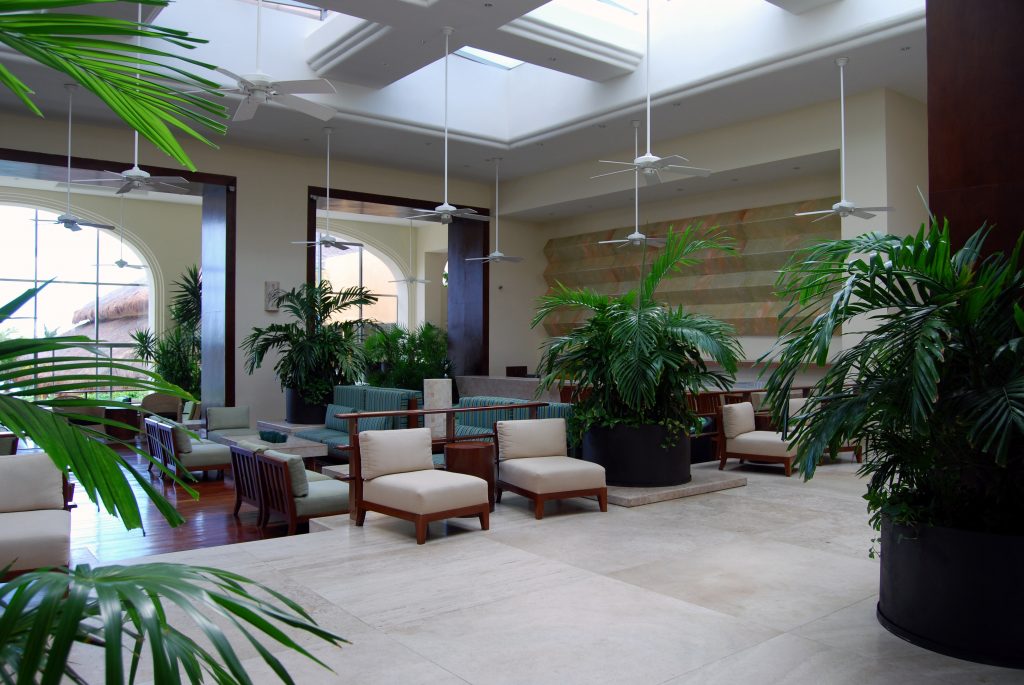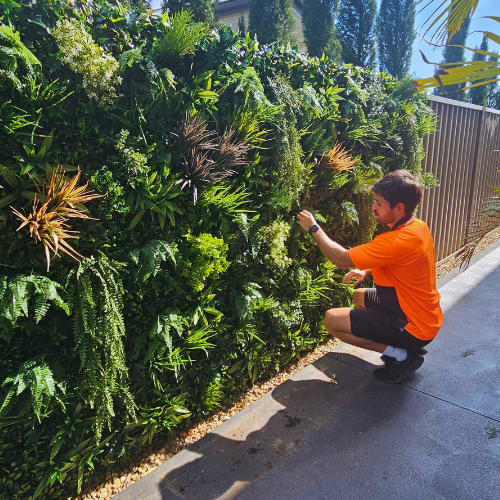
The lobby of a hotel is extremely important from both a design perspective and in terms of creating a relaxing environment. Since the lobby is the first thing guests see when they enter the doors, it is your chance to make the best first impression possible. People tend to make judgments about any hotel based on the environment in the lobby as they are waiting to get checked in. Imagine the atmospheric benefits if guests had a lovely hanging wall garden to look at as they wait! Here are some other great ways to create a relaxing hotel lobby.
Avoid Overhead Lighting
The lighting in a hotel lobby should a top design consideration. Overhead lights can be too bright and direct. If you must have overhead lighting for some reason, use low wattage bulbs or have them on a dimmer. Dim lighting with table lamps or other indirect lighting will create more of a relaxing environment.
Incorporate Greenery
Many hotels use a fake garden wall or two in their hotel lobby to incorporate nature. People tend to be more relaxed when they have some greenery to look at. The good thing is it’s easy to be creative when it comes to the placement of a vertical garden. Just remember to use all fake plants so you don’t have to worry about them ever looking wilted or having to maintain them at all.
Use Soft Music and Running Waterfalls
You can’t go wrong with soft music and slow running water when you want to create a relaxing environment in your hotel lobby. You can even position a hanging wall garden near a waterfall to create the ultimate peaceful scene. Don’t worry about playing music you think your guests will be able to sing to. That’s not the point of a hotel lobby. Calming music with the slow flow of a waterfall can be very relaxing for guests.
Evergreen Walls can create the perfect relaxing environment you desire the next time you design a hotel lobby. Whether it’s a fake garden wall you need or virtually any other type of greenery, we have you covered. Be sure to contact us to learn about our options and how we can help you with your design challenges.












